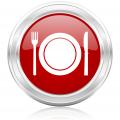Results 11 to 12 of 12
-
12-24-2014, 11:54 AM #11
It's gingerbread house time; check out this food (analog
 ) 3D printing project that uses a regular glue gun and chocolate morsels plus some ingenuity and skill to give making this traditial craft an extra DIY edge. It looks quite doable and fun, I will surely put it in the list of things to try out.
) 3D printing project that uses a regular glue gun and chocolate morsels plus some ingenuity and skill to give making this traditial craft an extra DIY edge. It looks quite doable and fun, I will surely put it in the list of things to try out.
http://www.evilmadscientist.com/2014...late-glue-gun/
--> What do you guys think, anybody has any experience? Has anyone of you done anything similar in true digital 3D printing?
-
01-18-2015, 07:12 PM #12
A SHORT HISTORY OF FOOD 3D PRINTING
2. THE CANDYFAB (2006-2009)
This was a "hobby project" of Windell Oskay and Lenore Edman of Evil Mad Scientist Laboratories that back in the day when that was still unheard of, aimed to create an inexpensive, personal DIY 3D printer. The CandyFab used sugar as a simple and inexpensive raw material, which was fused layer-by-layer using heat from a focused hot air stream. Over the three versions of the printer, the creators got some traction and lots of attention being even featured in Wired Magazine. And indeed their work, end product and story were quite interesting. They even created their own electronics platform, creatively called "Zuccherino" ("sugary" in Italian) as well as increasingly tailored air heater systems. Oskay and Edman reported maximum resolutions of 1.6 mm pixel size with the most advanced model. The build volume was on the large size for current personal 3D printers (around 1.7 cubic feet), as the value proposition was that the low-cost raw material would make it practical to build big and inexpensive. We should mention that the original goal of the project was not to produce edibles, which may be the reason why the focus was not on on creating products with a clean let alone appetizing appearance. As would be expected, the surface melting of sugar was uneven and led also to caramelization and hence dark and rough appearance. Still, dry melting for the digital design of edibles is an intriguing proposition which we have not seen anywhere else. In most current technologies a molten or semi-liquid material such as food paste or chocolate is extruded or a powder (like sugar itself) is fused using a plasticizer (i.e. water). In any case, like the garage project turned empire stories which are now a signature of the development of 3D printing (think Makerbot and FormLabs), the CandyFab was as exciting and promising as any other- but this one went nowhere. Still, it will keep inspiring and who knows? it may find sweeter times in the future.
Pictures: candyfab.orgLast edited by ajperez; 01-18-2015 at 07:22 PM.





 Reply With Quote
Reply With Quote



Extruder not feeding during print,...
04-28-2024, 02:02 PM in Tips, Tricks and Tech Help